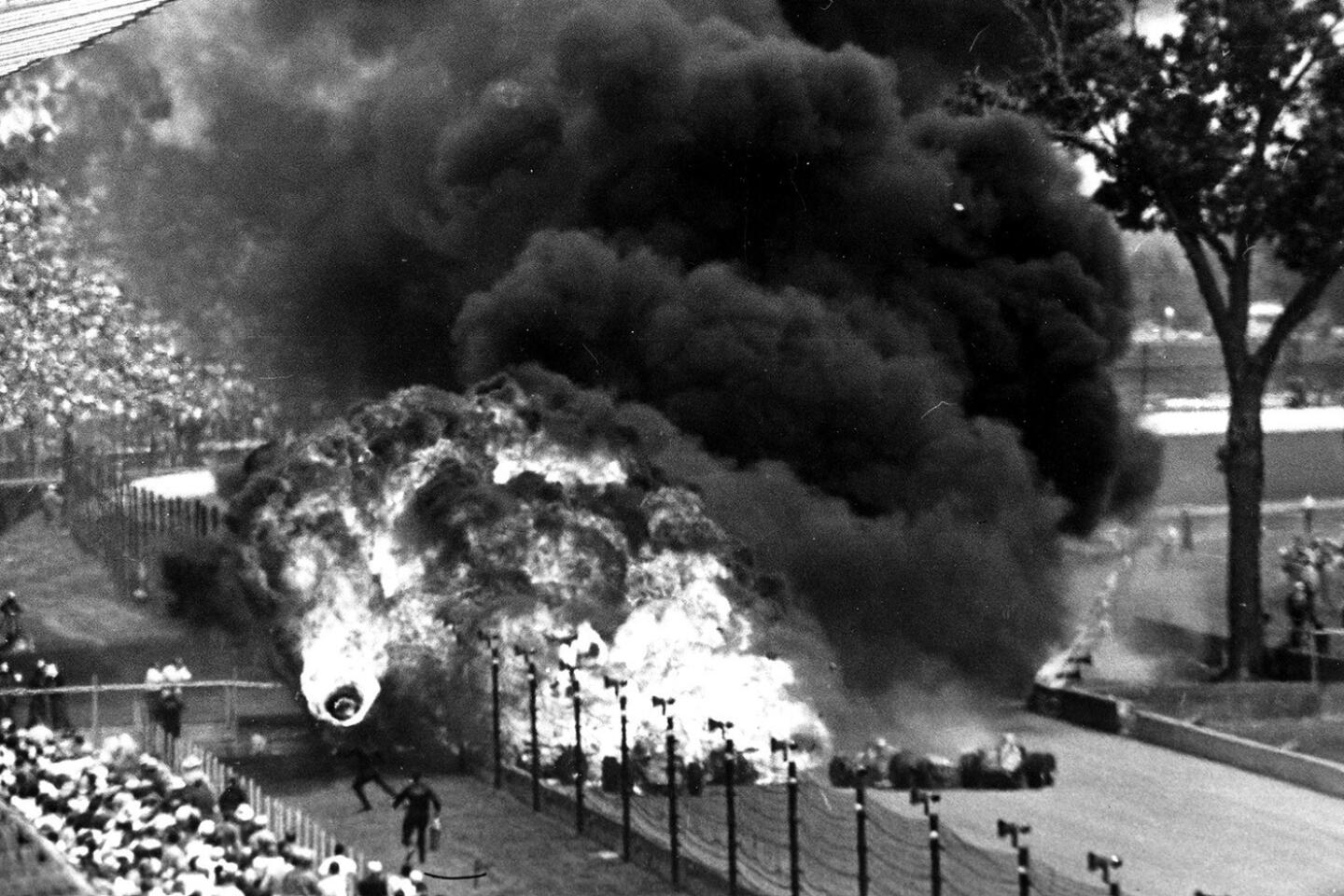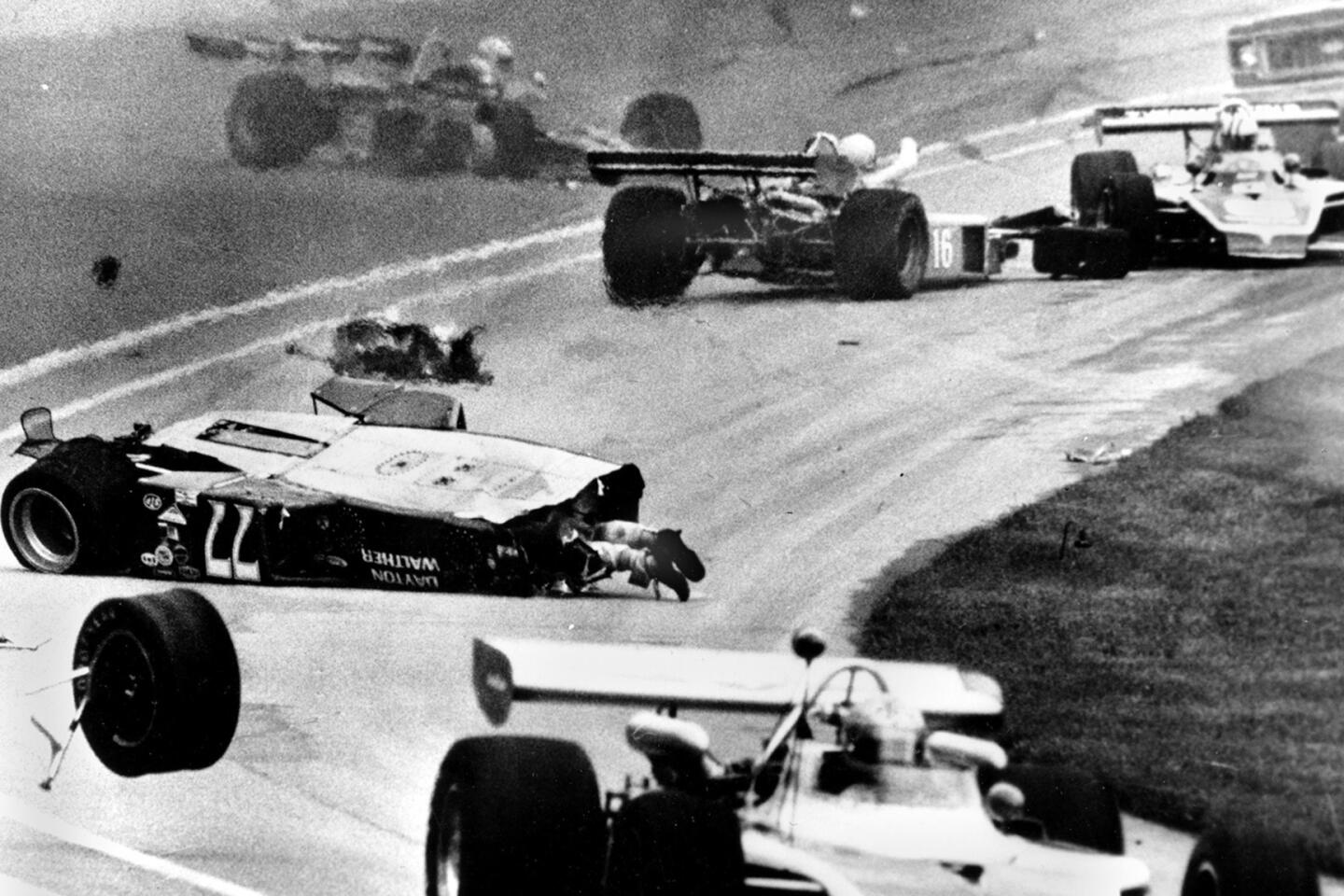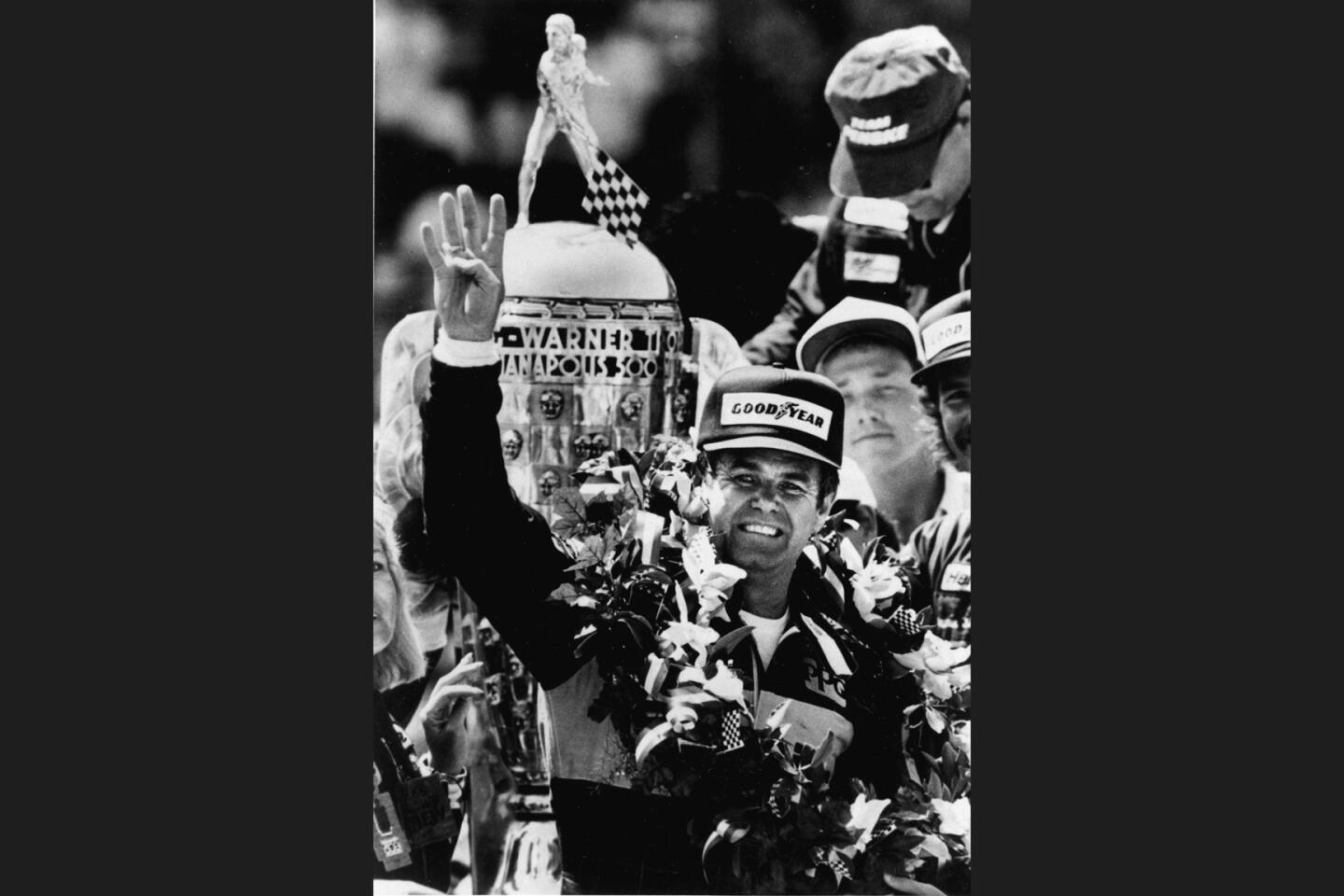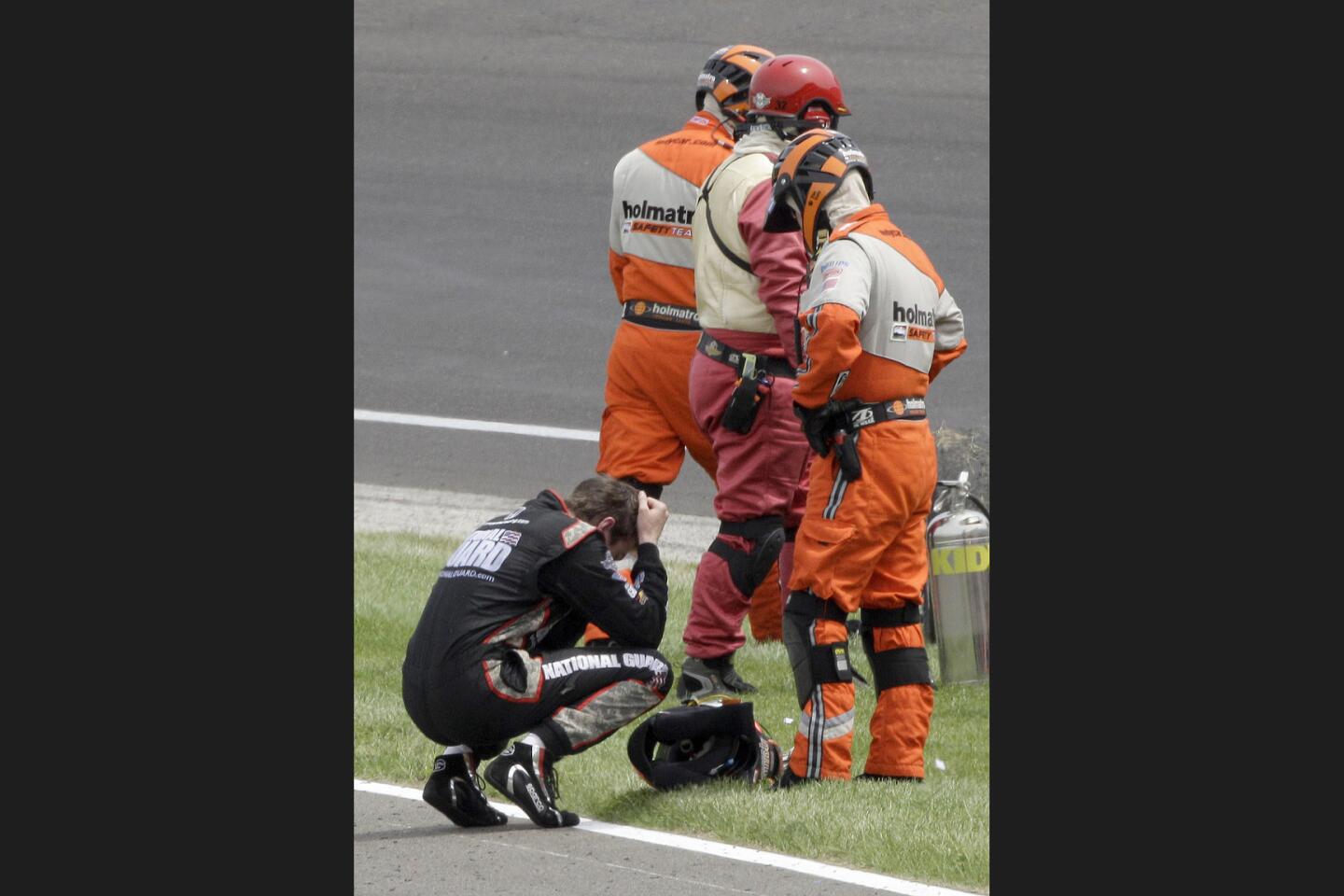The start of the Indianapolis 500 is unique, thrilling and dangerous
- Share via
Reporting from Indianapolis — The Indianapolis 500 is steeped with traditions but only one kept Michael Andretti awake the night before a race: The start.
“It’s all you think about,” said Andretti, a former IndyCar driver and now team owner. “You run that start through your mind about a million times. There’s nothing like it.”
In a format as dangerous as it is unique, the 33 drivers in the Indy 500 start the race in 11 rows of cars lined up three wide, rather than the conventional two-wide starts elsewhere in IndyCar, NASCAR and Formula One racing.
See more of our top stories on Facebook >>
The cars also are cramped as they rush down a front straightaway that’s only 50 feet wide at Indianapolis Motor Speedway, and they’re approaching 200 mph when the green flag is waved.
Then, within a couple of seconds, the drivers must funnel into the flatly banked first turn that can accommodate only single-file or two-wide racing – all the while trying not to clip another car and trigger a crash.
It’s a hair-raising moment and one that will be repeated Sunday in the 100th running of the legendary race. With so little room for error, some of the Indy 500’s worst accidents have occurred during the start.
“You hope every driver who starts that race has the right attitude that morning and the right knowledge to go along with it,” said Al Unser, one of only three drivers who has won the Indy 500 four times.
The right attitude?
“Not to crash,” Unser said.
There’s an old saying in racing that you can’t win a race on the first lap but you can lose one on the first lap by taking a risky chance that backfires.
Yet, race car drivers are aggressive by nature and, given the prestige of being an Indy 500 winner, some can’t help but try to immediately gain an extra position or two.
“You hear all that wisdom” about not crashing at the start “and all that wisdom goes right out of your brain,” said Mario Andretti, the 1969 Indy 500 winner and Michael’s father. “I always went for it.”
So does 2013 winner Tony Kanaan, who starts 18th on Sunday.
“If there’s a gap I’m going to go for it, that’s the way I’ve always done it at the start,” he said.
One of the ugliest starts was a multicar crash in 1973. David “Salt” Walther’s car catapulted into the catchfence, caught fire, spewed fuel and debris into the crowd and then spun like a pinwheel, upside down, as Walther’s exposed legs hung out in front of his mangled vehicle. He survived.
The late Times sports writer Jim Murray began his column the next day saying, “This is the first time I have come 2,000 miles to cover a fire.”
The starts since then have been less ghastly but several have seen accidents nonetheless.
Kevin Cogan spun and crashed in 1982 just as the field was taking the green flag. A multicar wreck occurred in Turn 1 in 1995. Marco Andretti (Michael’s son) and Mario Moraes tangled just past Turn 1 in 2009.
And last year, Sage Karam, driving for longtime team owner Chip Ganassi, hit the outside wall just past Turn 1.
“It was a tough thing for him to go out on the first lap, we thought we had a pretty good car that day,” Ganassi said. “If you give up a spot or two or three [at the start], it doesn’t matter. It’s better than being out of the race.”
The starting format is “one of the oldest traditions of the race,” said Donald Davidson, the speedway’s historian.
There were 40 cars in the first Indianapolis 500, in 1911, with rows of several cars each. Organizers narrowed the rows to three cars abreast in 1921 and that has been the format ever since, Davidson said.
Scott Dixon, a four-time Verizon IndyCar Series champion who won the Indy 500 in 2008, said one reason the start is so tense is because qualifying occurs a week earlier.
“You’ve got lots of time to analyze where you start, who’s around you, what you expect the others might do,” he said. “It’s all you’ve talked about for a week. It’s a big buildup of emotions.
“If I start over-analyzing things I try to think about something else or call somebody,” Dixon said.
Does Dixon ever wish they’d start only two-wide at Indy?
“No,” he said. “It’s tradition. It’s cool.”
But he always hopes to qualifying in the first or second row, where there is less traffic around him to cause trouble.
“You just go, and it’s everybody else’s problem to keep up,” he said.
That didn’t happen this year. Dixon starts 13th in the fifth row Sunday, a position fraught with danger.
Yet, no matter where a driver starts, what goes through their mind after they’ve made it cleanly through the perilous start and Turn 1 of the 2.5-mile, rectangular Indianapolis Motor Speedway?
Unser smiled at the question and replied, “That you’ve got three more corners you’ve got to worry about.”
MORE SPORTS NEWS
World Health Organization rejects call to postpone Rio Olympics because of Zika virus
Lionel Messi is uncertain for Copa America soccer match after he sustains an injury against Honduras
Soccer’s Dunga and Brazil are looking forward to a reunion with the Rose Bowl
Twitter: @PeltzLATimes
More to Read
Go beyond the scoreboard
Get the latest on L.A.'s teams in the daily Sports Report newsletter.
You may occasionally receive promotional content from the Los Angeles Times.

















